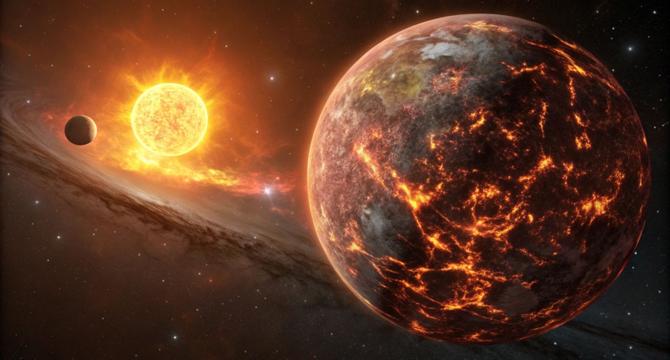Brighter Side of News
2w
160

Image Credit: Brighter Side of News
Astronomers discover ultra-dense ‘super-Earth’ with the density of lead
- Astronomers have discovered a super-sized rocky “super-Earth” planet, K2-360 b, with a staggering density of about 11 grams per cubic centimeter—similar to lead.
- K2-360 b is approximately 1.6 times the size of Earth but cram in 7.7 Earth masses.
- K2-360 b completes an orbit around its host star in just 21 hours, making it an extreme example of a USP planet, a rare category of exoplanets with orbital periods shorter than a day.
- NASA's K2 mission discovered K2-360 b in 2016 using the transit method.
- K2-360 c, the outer companion of K2-360 b, is likely a gaseous world with characteristics similar to Neptune, and is estimated to have a mass of at least 15 times that of Earth.
- The relationship between these two planets sheds light on the dramatic forces shaping planetary systems.
- K2-360 b's orbit was highly elliptical, but over time, tidal forces from the host star circularized its orbit, trapping it in its current, ultra-short-period configuration.
- The extreme conditions experienced by K2-360 b have stripped away much of its original atmosphere, leaving behind a rocky core.
- K2-360 b adds to the growing population of USP planets, a class that challenges current theories of planetary formation.
- This system serves as a natural laboratory for understanding the forces that shape planetary architecture, particularly in extreme environments.
Read Full Article
9 Likes
For uninterrupted reading, download the app